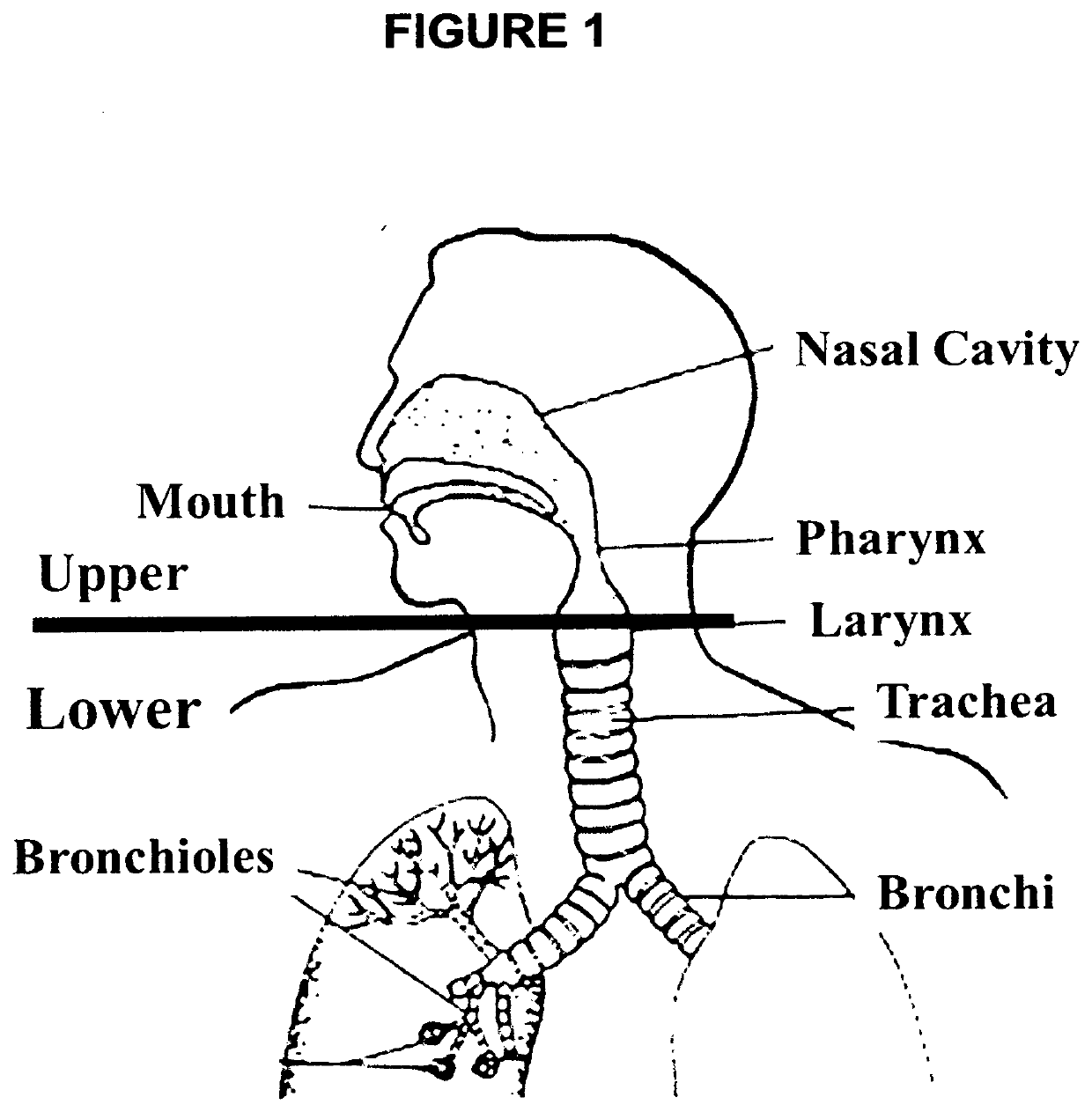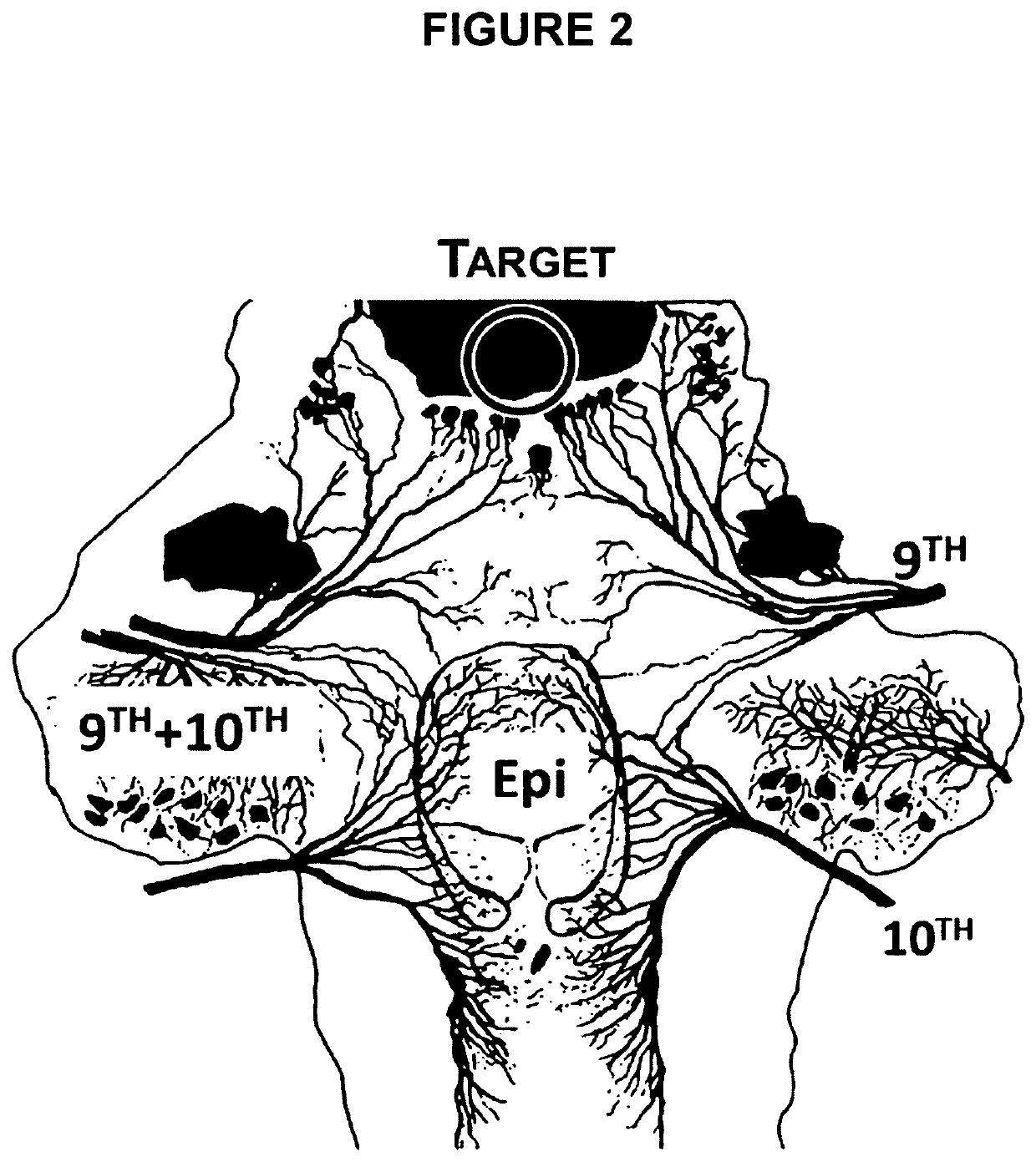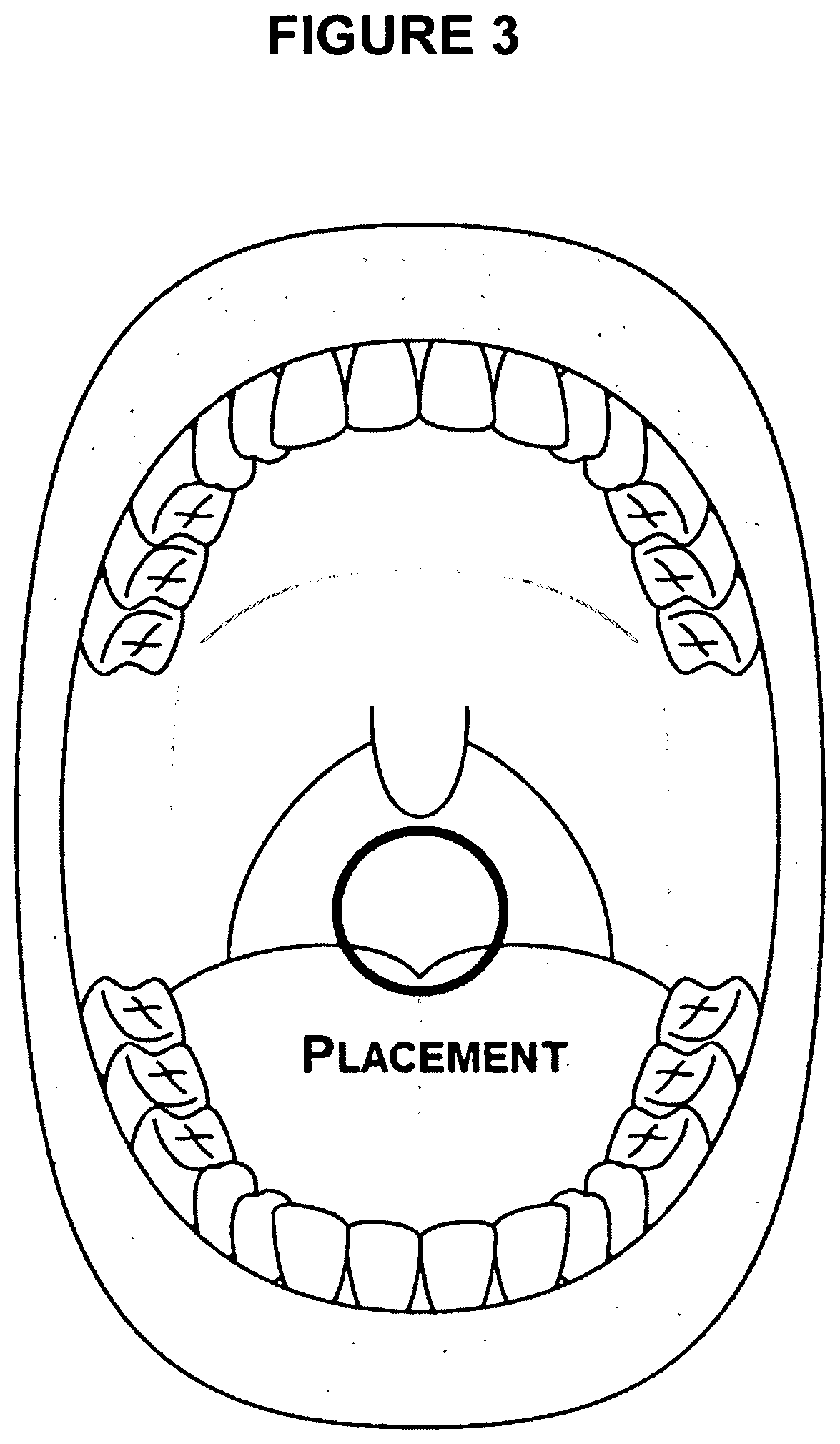Treatment of airway disorders and cough
a technology for applied in the field of treatment of airway disorders and cough, can solve the problems of source of purulence, new medicine will not work, and the aerodigestive tract lining is susceptible to injury, so as to facilitate the delivery and prolong the activity
- Summary
- Abstract
- Description
- Claims
- Application Information
AI Technical Summary
Benefits of technology
Problems solved by technology
Method used
Image
Examples
case 1
[0174]Two cases of subjects with cough variant asthma (CVA) are described here. CVA is a type of asthma in which the main symptom is a persistent non-productive cough, i.e. a cough that does not produce mucus. The cough, by definition of the condition, persists for at least 8 weeks and may be aggravated by such conditions as dry, smoky air, or respiratory tract infections. Treatment with normal asthma medications such as inhaled steroids and beta-adrenergic agonists (to relax bronchial smooth muscle) have limited value in reducing the cough of cough variant asthma.
[0175]The first subject was a 25-year old male working in a diner serving kebabs and grilled meat in the South of France. Business was good but he worked in a smoky environment and developed a persistent cough that lasted for 6+ months. He was diagnosed as having CVA, but standard medications for asthma did not affect the frequency of coughing which was constant, debilitating, and affected his ability at work. He was distr...
case study 2
[0178]A 50-year old male scientist received an award to conduct a 6-month research project in Guangzhou, China. He rented a hotel room and lived alone. He used the public subway and, in the fall, he “caught the flu” with a 3-day fever and throat discomfort, chills and coughing. He developed a “productive” cough with thick mucus, which gradually thinned out after about a week, but the cough persisted and increased in frequency, until his throat felt raw. The presence of mucus also continued, although it did not become purulent. He did a count on his coughing and reported an averaged of 25 to 40 coughs per hr, with higher frequency at night. He could not sleep well because lying down on the bed exacerbated the itch in his throat and increased the urge to cough. Because he worked in the laboratory, he had access to the DIPA-1-9 syrup (Simple Syrup, 8 mg / mL stored 0.8 mL per plastic vial) and began to experiment on himself. He took the syrup on an as needed basis for three successive da...
case study 3
[0180]A retired clinical pharmacologist worked at an out-patient clinic and consulted patients with respiratory problems. He frequently saw patients with cough, and he was atuned to current research, but he felt that the pipeline drugs were probably too costly for the treatment of acute cough. He volunteered to test the DIPA-1-9 formulations after obtaining informed consent from his subjects. Over a 3-month period, he recruited and made observations on 10 subjects with cough using a standardized questionnaire. There were 3 M, 7 F in the group, average age of 46 years, with cough of: unknown etiology (4), post-infectious cough (4), one bronchitis, and one eosinophilic bronchitis. Subjects were given a sprayer containing DIPA-1-9, 5 mg / mL in syrup, and a questionnaire to self-report cough frequency over a period of 1 week. At the end of the test period, the subjects reported that the medication was: very effective (3), partially effective (4), and not effective (3). All 3 of the “not ...
PUM
| Property | Measurement | Unit |
|---|---|---|
| concentration | aaaaa | aaaaa |
| volume | aaaaa | aaaaa |
| volume | aaaaa | aaaaa |
Abstract
Description
Claims
Application Information
 Login to View More
Login to View More - R&D
- Intellectual Property
- Life Sciences
- Materials
- Tech Scout
- Unparalleled Data Quality
- Higher Quality Content
- 60% Fewer Hallucinations
Browse by: Latest US Patents, China's latest patents, Technical Efficacy Thesaurus, Application Domain, Technology Topic, Popular Technical Reports.
© 2025 PatSnap. All rights reserved.Legal|Privacy policy|Modern Slavery Act Transparency Statement|Sitemap|About US| Contact US: help@patsnap.com



